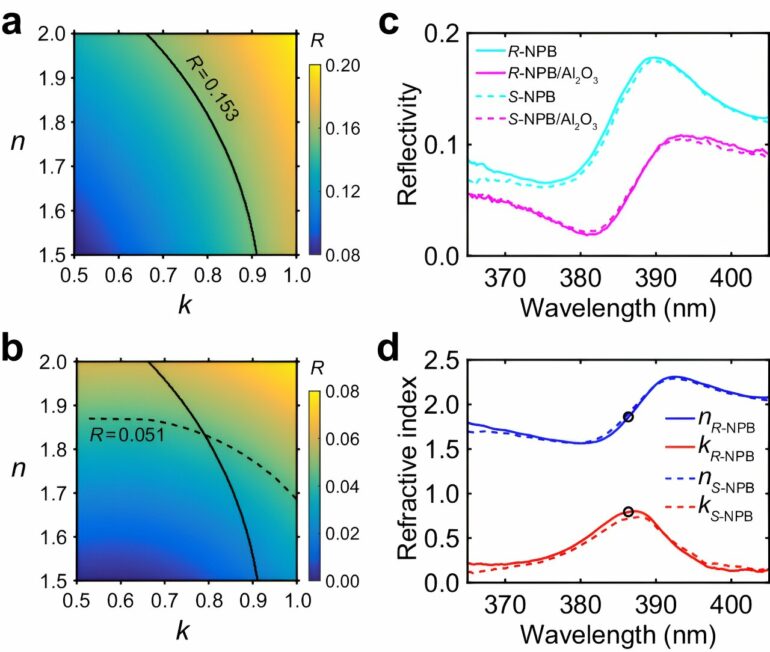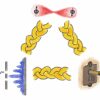Chiral molecules—that is, those that have mirror images of themselves—have significant benefits for transistors and solar energy devices. Studying their properties in close detail, though, has been tricky due to the limited methods for doing so.
Now, researchers have developed new methods for getting a more complete account of the properties of solid-state chiral materials, and characterize an important optical property for emerging semiconductors. The results of this research are published in Nature Communications.
Led by Peijun Guo, assistant professor of chemical and environmental engineering, and Diana Qiu, assistant professor of mechanical engineering and materials science, the researchers adopted a material known as two-dimensional (2D) chiral perovskite to study their chiroptical properties in their most intrinsic form of single crystals.
Guo explains that chiral molecules each have “left-handed and right-handed” versions of themselves, and therefore can’t be superimposed on each other. “These materials have distinct optical properties in that the left-handed version responds to light differently from the right-handed version.”
Devices such as computers, cell phones or laptops are based on field-effect transistors—basically small devices made out of silicon that can control the flow of electrons. “But the problem with that is that you have to physically move electrons around, and that costs energy—more than if you don’t have to move electrons around.”
Semiconductors like 2D chiral perovskites, though, are attractive material systems because they can be used to build new types of transistors for computers and other electronics with low energy dissipation. Another intriguing property of these materials includes what’s known as the bulk photovoltaic effect, making them potential candidates for converting sunlight into electricity.
Fully understanding these properties has been difficult, Guo said, because researchers previously used commercially available optical measurement sets to observe lower-quality samples. That is, Guo said, if you make a perfect silicon single crystal, it’s difficult to measure its chiroptical properties because commercial systems are incompatible.
So the Guo-Qiu research team developed experimental techniques to measure the chiroptical properties of the single-crystalline silicon in the very high-quality chiral materials that they made in single crystalline form and developed new theoretical tools to calculate the measured properties and help interpret the experiment. Qiu noted that their theoretical calculations revealed that the measured chiroptical properties are a quantum mechanical effect.
“Our work gives scientists a standardized procedure to examine a large library of these chiral perovskite materials for achieving large and useful chirality-induced optical and potentially electronic properties,” Guo added.
More information:
Shunran Li et al, Large exchange-driven intrinsic circular dichroism of a chiral 2D hybrid perovskite, Nature Communications (2024). DOI: 10.1038/s41467-024-46851-2
Citation:
New techniques reveal properties of solid-state chiral materials (2024, June 24)



